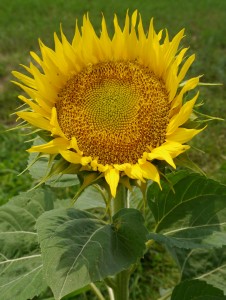Serbian Land of Sunflowers, Corn And Honey
 Peel away the petals of a rose and yet more lovely petals can be exposed. Beauty that would have been missed by just enjoying the flower at first glace could be revealed by peering beneath the surface. The same could be said of Serbia, a land to be enjoyed not just for its cities and nightlife but also for the wealth and variety that reward a little extra effort.
Peel away the petals of a rose and yet more lovely petals can be exposed. Beauty that would have been missed by just enjoying the flower at first glace could be revealed by peering beneath the surface. The same could be said of Serbia, a land to be enjoyed not just for its cities and nightlife but also for the wealth and variety that reward a little extra effort.
People can be amazed to learn that Serbia is a tapestry of diverse landscapes, varied cultures and even multiple ethnicities. Hosting such a rich mix of historical and cultural influences is what helps to make this country and its welcoming communities so rewarding. For many visitors to Serbia, this can be one of the most surprising things to discover in a country about which they know quite little. It can also be one of the most fulfilling gifts that Serbia can offer any casual visitor or tourist.
Belgrade Turns Up New Surprises
The first stop for many is obviously Belgrade, a capital of business and the arts, of vibrant nightlife and relaxed days in parks and by the river. Belgrade is a city I fell for on my first visit and it is a city that still turns up new surprises each time I return. With narrow streets and a wide waterway, nearby Novi Sad is equally exciting but it also has a character all of its own. The city that is known to many for its Exit Festival is also a place of hidden courtyards and alleys, of small restaurants serving delicious food and basement bars that welcome visitors as regulars.
That two cities so close on the map can be so separate in style is representative of the diversity that can be seen across the country. Travel some miles down any road and the landscape could change, the food could vary slightly or the influence of history on a town could be entirely different from its nearest neighbour. From the flatlands of Vojvodina, with its Hungarian influences in food, architecture and language, to the rolling hills, mountains and farmsteads of the south, where other influences half left their mark, Serbia is a land to be visited, explored and visited again.
Influences From History
I recently spent a wonderful week travelling in Vojvodina, discovering an area and people that were still quite new to me. I drove through villages where Hungarian is still spoken and visited towns such as Sombor, Subotica and Kikinda where the influences of history are still very much in evidence. Arriving in the country from Croatia at the far north western tip of Serbia, my impressions were of a lush green land of marshes, reed beds and abundant trees. Driving into Sombor, a town known for its incredible greenery, I began to experience the flat nature of this region. This beautiful little town, with it’s open boulevards, grand architecture and local farmers market has a relaxed atmosphere, where it is easy to stroll the streets, take in the sights and enjoy a coffee with the friendly locals.
Sombor did not quite prepare me for the expansive flatness of this oh-so-flat region which begins just outside the town. From Subotica in the north, with its ornate and somewhat showy architecture, south to the fortress city of Novi Sad and on to the bordering hills of Belgrade itself, Vojvodina in the summer is a sea of sunflowers and corn. Like soldiers standing proud on parade, mile upon mile of bright yellow flowers stretch out on the horizon, faces turned to soak up the sun. Between those fields, tall stalks bearing fat golden heads of corn sway in the wind that can whip across the flatlands. What is at first a joyous sight can soon become quite monotonous after an hour or more of driving, but the scattered villages and farms, with tall-spired churches signaling their presence from a distance, can offer respite and a warm welcome.
Vojvodina Farmhouse
We stayed in a farmhouse in a small northern village, where everyone knows each other and everyone has a smile for strangers as they passed by on their bikes. This was a step back in time to a land of milk and honey. In fact, we feasted on the local produce that was bought from nearby homes. We breakfasted on golden yoked eggs, freshly laid that morning by the same hens that woke us with their clucking just metres from our bedroom window, and enjoyed ripe plums that fell, quite literally, from the tree overhanging our table. The honey was from nearby hives and our fresh bread came from the house next door, the familiar smell beckoning us to buy.
By the time we left the region, time and the extreme warm weather was already starting to take its toll on the landscape. The once noble sunflowers now slouched in the fields, with their heads bowed in collective resignation to their fate, and the corn that had ripened too early was already starting to perish in the harsh temperatures. Even the deliciously juicy and sweet plums in the garden of our rented farmhouse had come on too early and talk among the neighbours was of what effect this might have on this year’s rakija brew. More worryingly, there were hushed words spoken about how people might survive the winter, if this year’s crop was not picked and packed soon enough. Let us hope that this year brings a kind winter for everyone out there.


No comments yet.
Be first to leave your comment!